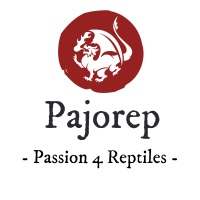
Bacteria are single-celled micro-organisms without a core. There are many types of bacteria. They are found everywhere, including in the human body, for example in the intestines. They are very small and can only be seen under the microscope. Under the right conditions, bacteria can multiply very quickly, and some species of bacteria can survive even under extreme conditions such as in volcanoes or the deep sea. Bacteria are important for our metabolism and defense. You need to have the free bloodborne pathogens training there.
The harmless bacteria are collectively also referred to as the microbiota. But there are also bacteria that can cause diseases such as skin infections, diarrhea, respiratory tract infections and meningitis. They do this by making substances that make them better attached to host cells, penetrate the host cell, or suppress the immune response of the host, and by secreting certain toxins. Antibiotics can usually be used against diseases caused by bacteria, although bacteria can also become resistant insensitive to them.

Viruses
Viruses are infectious micro-particles that can cause all kinds of diseases. Their multiplication depends on a living host cell. When a virus has invaded a cell, it uses the host cell to replicate itself. New virus particles are released and can then infect new host cells. There are many types of viruses that are classified into families. For example, there are herpes, corona and retroviruses. Some viruses cause relatively mild diseases, such as a cold, cold sore or flu. But also serious diseases such as HIV, SARS, and hepatitis are caused by viruses. Antibiotics cannot be used to treat viral infections. Specific antiviral drugs can combat viruses. You can also prevent virus infections by vaccinating.
Parasites
A parasite is an organism that lives together with another organism the host and uses the host to stay alive and multiply. Parasites can live on, but can also live in a host. The parasite and the host usually live in ‘symbiosis’. That means that there is a balanced relationship between the parasite and the host, without the host perishing. However, parasites can cause unpleasant conditions. Parasites occur in humans, animals and plants. In humans and animals, parasites occur in the form of worms, fleas, lice and ticks. A known disease caused by parasites is malaria. In malaria, parasites are injected into the bloodstream of people by mosquitoes.
Infection and Inflammation
The terms infection and inflammation are often used interchangeably but do not mean the same thing. When a bacterium, virus or parasite invades a living creature and then multiplies there, we speak of an infection. An infection does not always have to lead to damage or illness. Inflammation is a reaction of the body to damage to tissue by, for example, heat, a cut, irritants or micro-organisms such as bacteria. The immune system itself causes this inflammatory response and does this to remove the harmful substances and repair the tissue damage. Sometimes the body is ‘confused’ and evokes an inflammatory response to substances that are not harmful at all, such as with rheumatism autoimmune disease. Inflammation can, therefore, be a reaction to an infection.
Grow
If a patient comes to the doctor with complaints that are reminiscent of an infection, the doctor can take a culture. Moisture, urine or feces are taken from which a little is put on culture.
